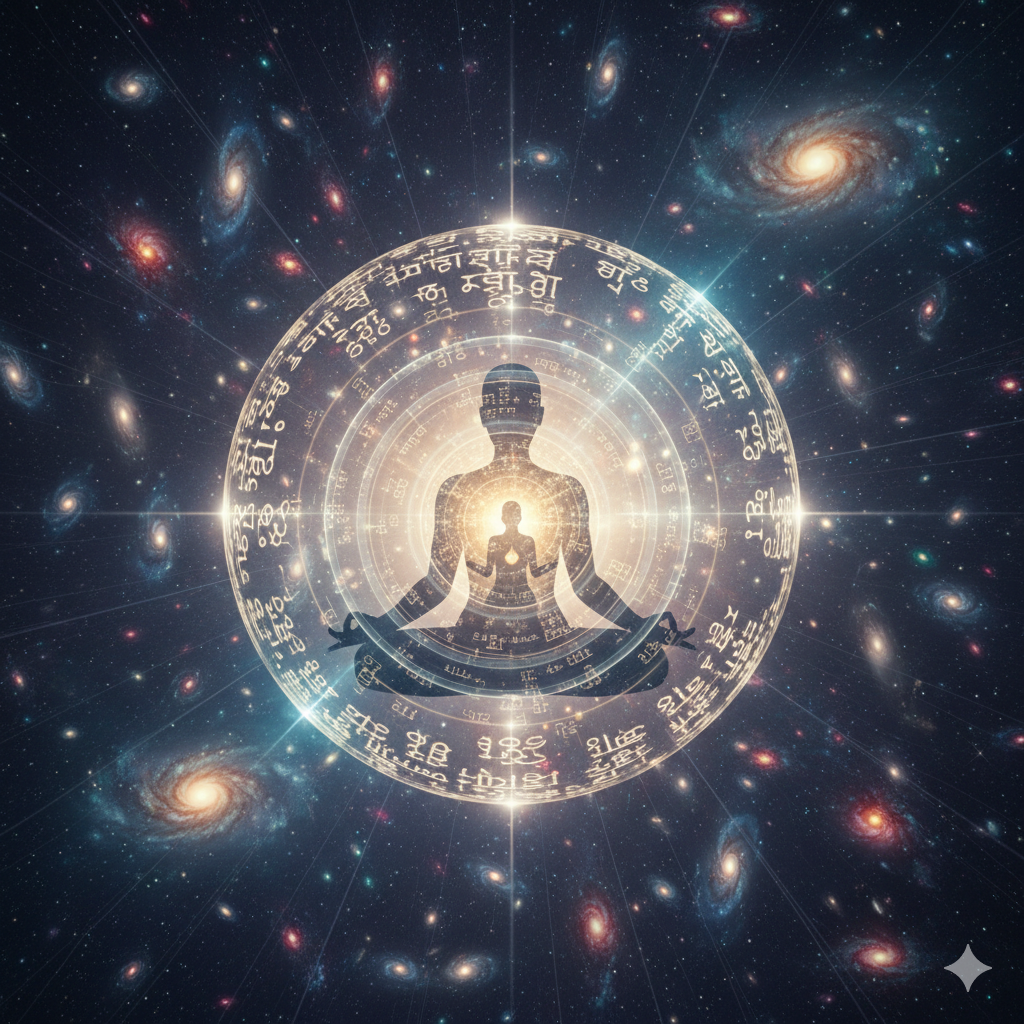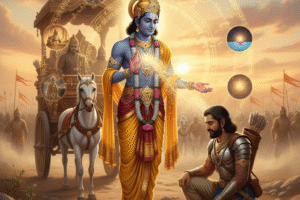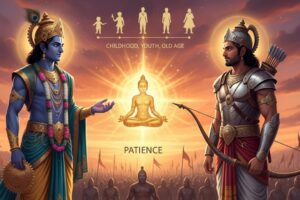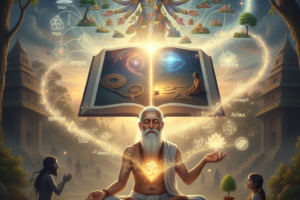
Pratyabhijna,The Deeper Meaning of Antaha,Atma Tattvam
- Posted by Sri Kameswari Foundation
- Date October 24, 2025
- Comments 0 comment
The different concepts that need to be understood in order to grasp the essence of Sri Krishna’s teachings to Arjuna—particularly in addressing his doubts about engaging in the war—are explained further in this episode.
Let us begin by understanding what Pratyabhijna is and how it is to be practiced.
Pratyabhijna
Generally,whatever we perceive through our senses brings either happiness or sadness,binding us within the web of sensory experiences.At times,excessive indulgence in these perceptions leads to dejection;at other times,unfulfilled desires cause the same.Even when our desires are fulfilled,we may still feel discontent,comparing the present experience with earlier ones.
However,when we consciously live beyond the dualities of happiness and sorrow,cultivating patience and restraint from sensory traps,we begin to move towards the ultimate reality.
In daily life,we often face situations that demand maturity and composure.In such moments,if we learn to view ourselves as a third person — rising above both the situation and our own personality — we start to understand the true cause behind the scenario and how to take control of it.
In Sanskrit,this awareness is termed Pratyabhijna.Pratyabhijna can be explained as follows with an example:When we look at a laptop,we know we are looking at a laptop.When we go little deeper,we realise that we are aware of knowing that we are looking at it — a recognition one level higher than mere perception.Similarly,when we become aware of our own anger,that awareness itself is a step above the emotional state.
One who masters this art of self-awareness — observing oneself with patience and rising above each situation — is called a Dhīra. Such a person attains mastery not through worldly accomplishments but through true knowledge and self-control.
We often equate success with academic achievements, wealth, influence, or managerial skills. While these may bring worldly success,they are transient and cannot lead to eternal bliss.The inward journey demands patience and the right channelisation of energy.
To embark upon this inner journey, one must constantly seek the cause behind every effect — a quest central to liberation.
The Deeper Meaning of “Antaha”
Antaha means “inside”.The word Antevaasi — commonly used for disciples — literally means “one who lives inside.” While it refers to those residing in the Gurukula,it also symbolises those who live within the Guru’s heart.
Only one who has access can truly go inside.An insider knows much,just as a person in an administrative role understands the inner workings of a company — promotions,changes or decisions unseen by others.
Similarly,the path to explore the inner self differs from worldly access.This inner path is realised only through deep upasana — meditative discipline.One who perceives the cause behind both the eternal Soul and the perishable body is the true seer of the within.
The Words Vedanta and Siddhanta
The word Vedanta literally means “the end of the Vedas,” but it can also mean “the inner essence of the Vedas,” for its truths cannot be grasped easily — they require a Guru’s guidance, control over the senses (indriya nigraha), and steadfast dedication.
Likewise,Siddhanta means both “conclusion” and “inner essence”.It represents the final judgement that arises after thorough deliberation — much like how the juice of sugarcane is obtained only by crushing it or how butter emerges only after intense churning of curd.
Atma Tattvam
Every atom in this universe — animate or inanimate,visible or invisible — is pervaded by the Atman.The entire cosmos has arisen from this imperishable Self.This same truth is expressed in the Upaniṣads by different names — Parabrahma,Sat,Akasa and so on.
According to Vedanta,all creation emerges from Sat–Chit–Ananda (Paramatma).According to Sankhya,it arises from Prakriti.This raises a doubt — if Prakriti means “nature,” which is creation itself,how can creation originate from it?In this context,Prakriti efers to the primordial combination of the three guṇas — Sattva,Rajas and Tamas.
One who practices indriya nigraha and learns to perceive the eternal nature of the Soul and the transient nature of the body with patience becomes a Tattvadarśi — a seer of truth.
Such a person is never swayed by happiness or sorrow.They clearly perceive the distinction between Sat (the real) and Asat (the unreal).
You may also like

Ch-2|Meaning of Shlokas 15-17


